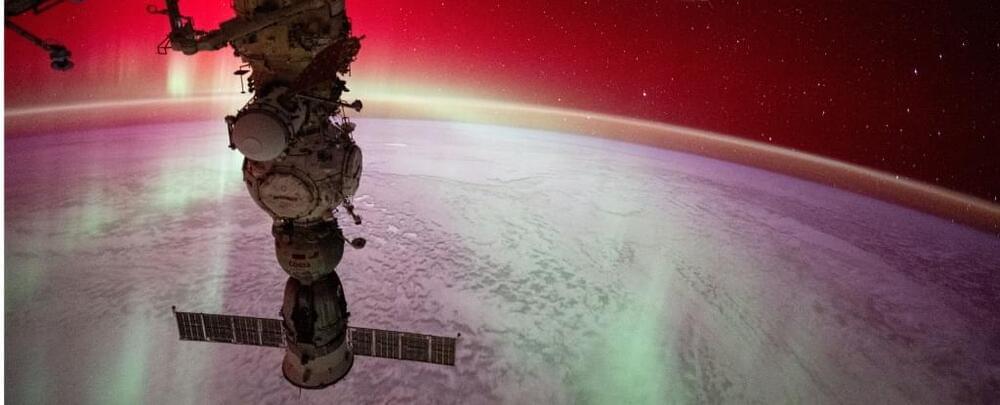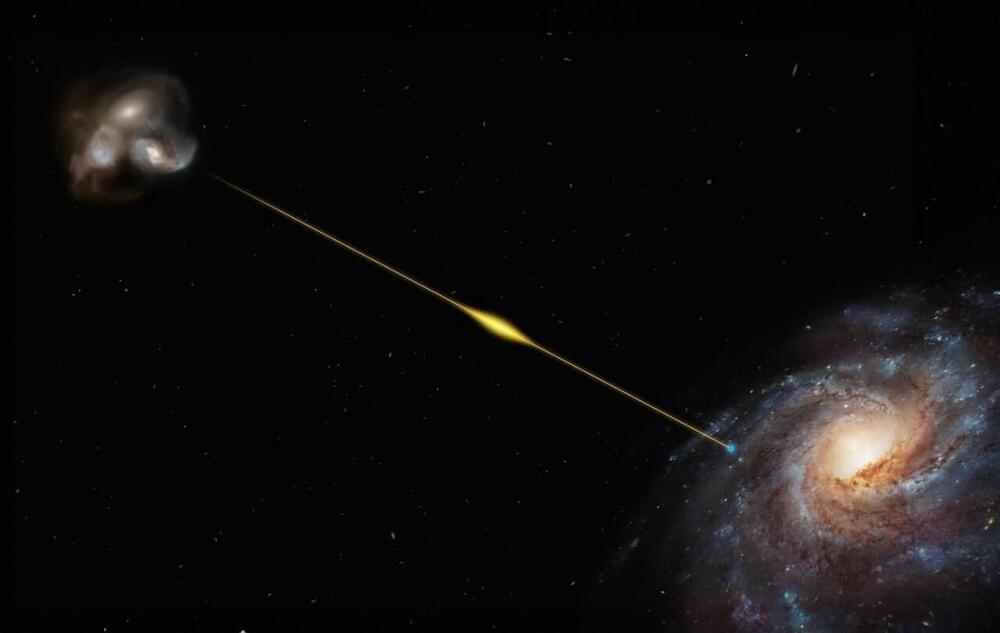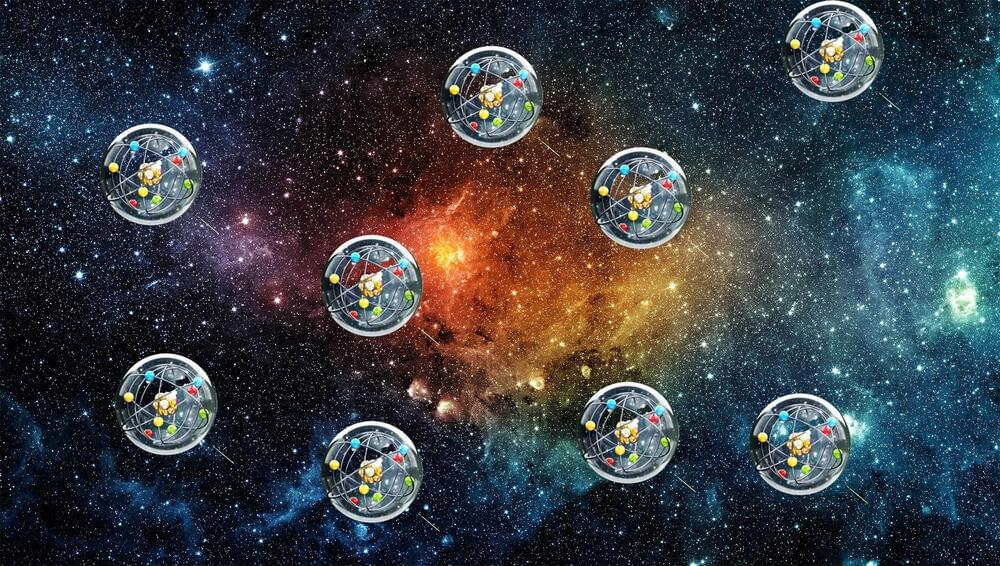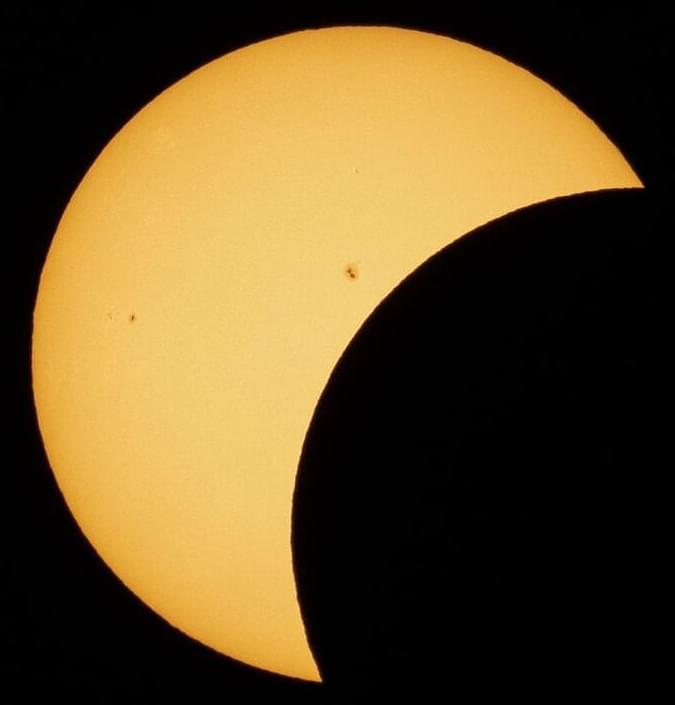Our radio signals have only traveled 200 light-years—just a tiny fraction of the galaxy.



Every year, the International Space Station produces some of the world’s best photography.
Astronauts tend to be technically skilled with a camera, yes. Many of them are engineers, after all.
Their real photography advantage, though, is the glorious view from space as they circle our planet every 90 minutes.
Metaverse.
https://www.youtube.com/watch?v=80IIEnSNwQc.
https://www.youtube.com/watch?v=KLOcj5qvOio.
AR Healthcare.
Space Tourism and Colonization.
https://www.youtube.com/watch?v=aMZaqn-5Yrs.
Bioprinting.
https://www.youtube.com/watch?v=P7THO95V6Lo.
Mirroring Reality Digital Realm.
https://www.youtube.com/watch?v=qWz9fA7RUyc.

The unusual system of three ‘super puff’ planets has at least one more planet, revealed by its gravitational tug on other planets. An unusual planetary system with three known ultra-low density “super-puff” planets has at least one more planet, according to new research led by researchers from Penn State and Osaka University. The research team set out to study Kepler-51d, the third planet in the system, with NASA’s James Webb Space Telescope (JWST) but almost missed their chance when the planet unexpectedly passed in front of its star two hours earlier than models predicted. After scrutinizing new and archival data from a variety of space and Earth-based telescopes, the researchers found that the best explanation is the presence of a fourth planet, whose gravitational pull impacts the orbits of the other planets in the system.
The new planet’s discovery is detailed in a paper appearing Dec. 3 in the Astronomical Journal.
“Super puff planets are very unusual in that they have very low mass and low density,” said Jessica Libby-Roberts, Center for Exoplanets and Habitable Worlds Postdoctoral Fellow at Penn State and co-first author of the paper. “The three previously known planets that orbit the star, Kepler-51, are about the size of Saturn but only a few times the mass of Earth, resulting in a density like cotton candy. We think they have tiny cores and huge atmospheres of hydrogen of helium, but how these strange planets formed and how their atmospheres haven’t been blown away by the intense radiation of their young star has remained a mystery. We planned to use JWST to study one of these planets to help answer these questions, but now we have to explain a fourth low-mass planet in the system!”
XR Today reports on the latest extended reality news from around the globe, including virtual reality, augmented reality and mixed reality.

An international team has spotted a remote blast of cosmic radio waves lasting less than a millisecond. This ‘fast radio burst’ (FRB) is the most distant ever detected. Its source was pinned down by the European Southern Observatory’s (ESO) Very Large Telescope (VLT) in a galaxy so far away that its light took eight billion years to reach us. The FRB is also one of the most energetic ever observed; in a tiny fraction of a second it released the equivalent of our Sun’s total emission over 30 years.
The discovery of the burst, named FRB 20220610A, was made in June last year by the ASKAP radio telescope in Australia and it smashed the team’s previous distance record by 50 percent.
“Using ASKAP’s array of dishes, we were able to determine precisely where the burst came from,” says Stuart Ryder, an astronomer from Macquarie University in Australia and the co-lead author of the study published today in Science. “Then we used [ESO’s VLT] in Chile to search for the source galaxy, finding it to be older and further away than any other FRB source found to date and likely within a small group of merging galaxies.”


As fringe as the idea of solar radiation modification once was and as generally controversial as it remains, it is gaining some traction. Last spring, the University of Chicago hired David Keith, one of the most visible proponents of solar geoengineering, to lead a new Climate Systems Engineering initiative, committing to at least 10 new faculty hires for the program. The group will study solar geoengineering, as well as other kinds of Earth system modifications aimed at addressing the climate crisis.
With this initiative, the University of Chicago is attempting to position itself as the place for serious scientific consideration of the logistics and implications of Earth system interventions aimed at reversing or counteracting climate change. It is part of a broader university effort to become a global leader in the climate and energy space.
Previously, Keith was at Harvard University, where he helped launch the Solar Geoengineering Research Program. After repeated delays and years of controversy, Harvard recently canceled a small-scale outdoor geoengineering experiment that Keith helped plan. That experiment would have involved launching a high-altitude balloon, releasing fine particles of calcium carbonate into the stratosphere, and then sending the balloon back through the cloud to monitor how those particles disperse and interact within the atmosphere, and with solar radiation.
Use code isaacarthur at the link below to get an exclusive 60% off an annual Incogni plan: https://incogni.com/isaacarthur.
Exploring the latest advancements in space elevator technology and their potential to revolutionize space access.
Visit our Website: http://www.isaacarthur.net.
Join Nebula: https://go.nebula.tv/isaacarthur.
Support us on Patreon: / isaacarthur.
Support us on Subscribestar: https://www.subscribestar.com/isaac-a…
Facebook Group: / 1583992725237264
Reddit: / isaacarthur.
Twitter: / isaac_a_arthur on Twitter and RT our future content.
SFIA Discord Server: / discord.
Credits:
Space Elevators: Strategies \& Status.
Episode 478; December 19, 2024
Produced, Narrated \& Written: Isaac Arthur.
Editors:
Adrian Nixon.
David Brandt-Erichsen.
Peter Swan.
Graphics:
Jarred Eagley.
Jeremy Jozwik.
(ISEC) International Space.
Elevator Consortium.
Ketie Byrne.
Ken York YD Visual.
Phil Swan.
The Atlantis Project.
Real Courte.
Select imagery/video supplied by Getty Images.
Music Courtesy of Epidemic Sound http://epidemicsound.com/creator.
Stellardrone, \
In today’s episode of Theories of Everything, Curt Jaimungal and Julian Barbour challenge conventional physics by exploring Barbour’s revolutionary ideas on time as an emergent property of change, the universe’s increasing order contrary to entropy, and the foundational nature of shape dynamics.
SPONSOR (THE ECONOMIST): As a listener of TOE you can get a special 20% off discount to The Economist and all it has to offer! Visit https://www.economist.com/toe.
TOE’S TOP LINKS:
Support TOE on Patreon: / curtjaimungal (early access to ad-free audio episodes!)
Enjoy TOE on Spotify! https://tinyurl.com/SpotifyTOE
Become a YouTube Member Here:
/ @theoriesofeverything.
Join TOE’s Newsletter ‘TOEmail’ at https://www.curtjaimungal.org.
LINKED MENTIONED:
The Janus Point (Julian Barbour’s book): https://www.amazon.com/Janus-Point-Ne?tag=lifeboatfound-20…
‘Relational Concepts of Space and Time’ (Julian Barbour’s 1982 paper): https://www.jstor.org/stable/687224
‘The Theory of Gravitation’ (Paul Dirac’s 1958 paper): https://www.jstor.org/stable/100497
Carlo Rovelli on TOE: • The Loop Quantum Gravity Debacle: Car…
‘On the Nature of Things’ (book): https://www.hup.harvard.edu/books/978…
Leibniz: Philosophical Writings (book): https://www.amazon.com/Leibniz-Philos?tag=lifeboatfound-20…
Elementary Principles of Statistical Mechanics (book): https://www.amazon.com/Elementary-Pri?tag=lifeboatfound-20…
The interpretations of quantum mechanics in 5 minutes (article): https://curtjaimungal.substack.com/p/.…
Sean Carroll on TOE: • The Crisis in (Fundamental) Physics i…
Timestamps:
00:00 — Introduction.
02:12 — Working Outside of Academia.
03:53 — Space, Time, Dimension.
10:40 — Mach’s Principle.
21:33 — Mach Confused Einstein.
24:22 — Two Particle Universe.
31:46 — Carlo Rovelli.
35:02 — Julian’s Ontology.
43:37 — Julian’s Theory ‘Shape Statistics’
51:11 — Leinbiz’s Philosophical Writings.
56:14 — Expansion of the Universe (Scale Invariance)
01:05:02 — Cosmological Principle.
01:15:34 — Thermodynamics.
01:17:15 — Entropy and Complexity.
01:30:40 — Wave Function / Double Slit Experiment.
01:39:21 — God.
01:44:48 — The Role of Instruments.
01:47:44 — Etymology of Pattern and Matter.
01:51:25 — Join My Substack!
Other Links: